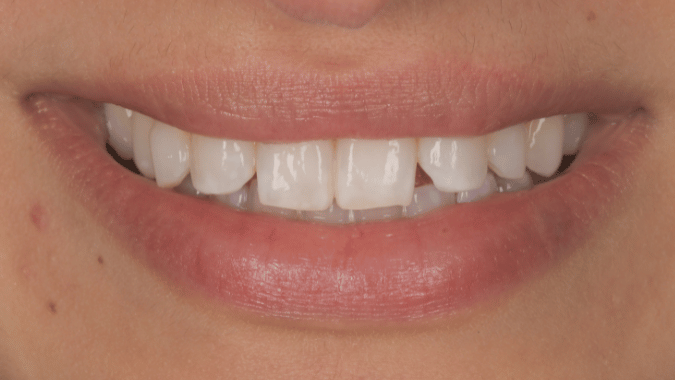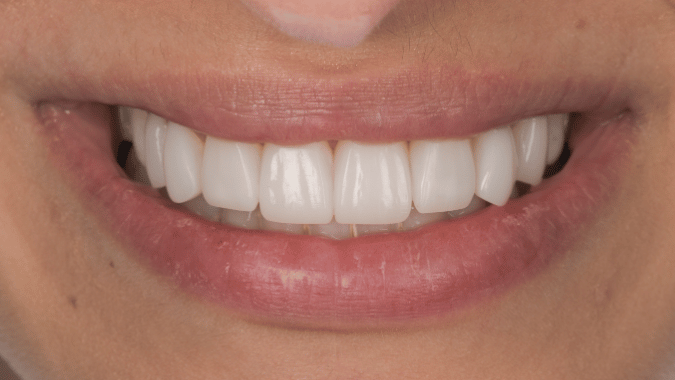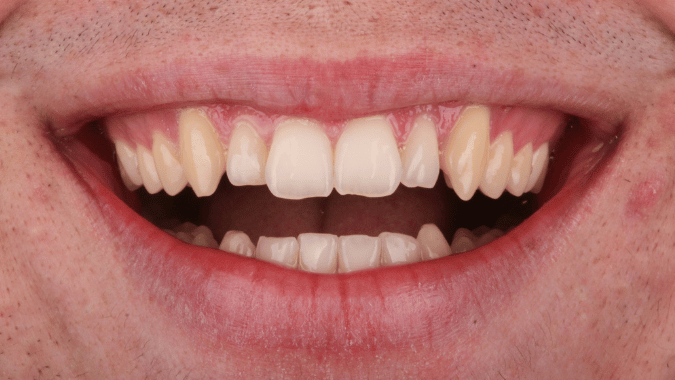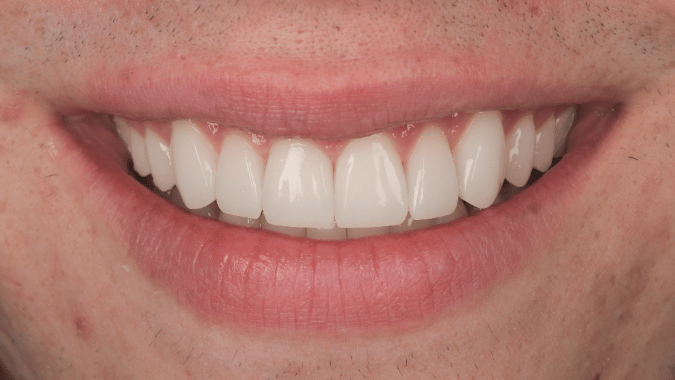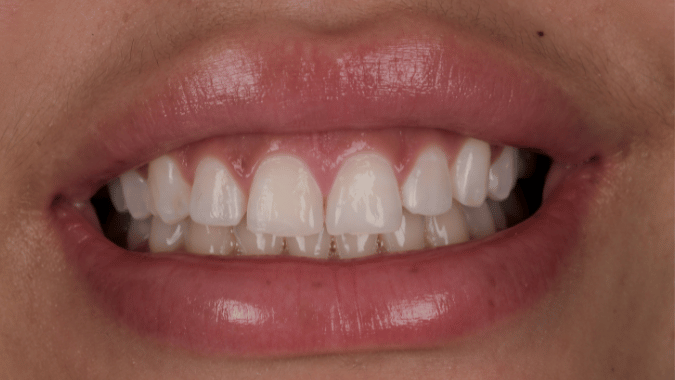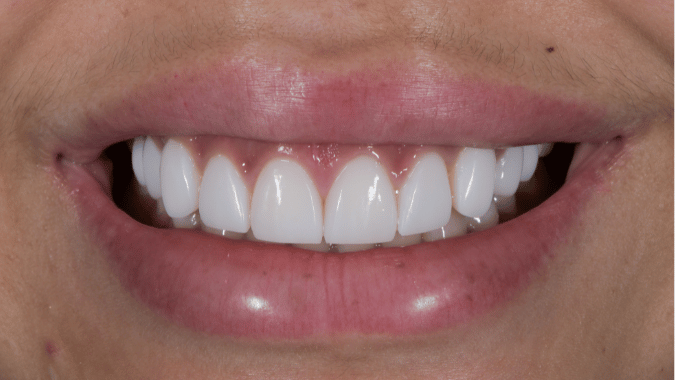Restore the beauty of your smile in just a single appointment with composite bonding.
This modern technique layers tooth-coloured composite resins to reshape individual teeth and repair cracks and chips.
Treatment Overview
Purpose: It improves cracks, tooth shade, length, and width/closes small gaps between teeth.
Lasts for: 3-7 years (dependent on smile maintenance/diet/lifestyle habits).
Type of treatment: Cosmetic.
What is composite bonding?
Enhancing your teeth with composite bonding is one of the easiest routes to a better-looking smile. Perhaps your smile has uneven edges, mild wear, or cracks? Or could your teeth benefit from being reshaped to balance width with length? Composite bonding can achieve all these goals; no anaesthetic (or drilling) is needed in many cases. It is a minimally invasive treatment during which your dentist layers composite resin.
When working on a select few teeth, composite shades are matched to your natural teeth. However, if you are looking for a full smile makeover working on 8 plus teeth and brightening your tooth shade, we can opt for a much lighter composite shade!
What are the benefits of composite bonding?
Minimally invasive
None of your tooth structure needs to be removed prior to the composite layers being applied to your teeth. Composite bonding differs from veneers in this respect.
Great for your self-esteem
Say goodbye to the niggling feelings of self-consciousness about your smile once your teeth have been treated.
Affordable
Composite bonding offers patients an affordable means of enhancing their teeth, making treatment accessible to a range of budgets.
Just a single appointment is needed
Get your new smile in just one appointment in just one appointment lasting between 30 minutes and 3 hours, depending on how many teeth are being treated. We then recommend you return for a review appointment after 2 weeks to see how you are getting on with your new smile.
The composite bonding process
Step 1: Consultation with your dentist
We will start by examining your teeth and selecting a tooth shade that will match the natural shade of your teeth. Suppose you’re looking to have a full shade makeover plus treatment to repair or reshape your tooth. In that case, we may recommend teeth whitening treatment prior to starting composite bonding (as composite resin can’t be whitened with whitening gel).
Step 2: Applying the composite resins
The resins are applied to your teeth and adhered in place. Your dentist will work their magic, carefully moulding the resins into a pleasing aesthetic shape that befits your smile.
Step 3: Hardening and polishing
The resins are set in place with a high-intensity curing light throughout the process. Your tooth is then polished to give the shine and vitality of real, healthy-looking tooth enamel.
Aftercare
Composite resin can be looked after with the same care and attention as real tooth enamel. Remember that composite resin can stain the same way teeth do, so limit your intake of tooth-staining food and drink. We advise coming in for 6-monthly hygienist appointments, plus a 30-minute session to repolish your composite after 12-18 months to keep them shiny.
We also recommend avoiding biting on foreign objects – we have seen many patients chip their composites from biting pens and ice!
Our dentists in Wigan will do everything they can to make sure you’re happy and comfortable during the process.
FAQs
1. How does composite bonding improve my smile?
Our skilled dentists work with composite resins every single day.
Using cutting-edge shaping techniques and their excellent level of manual dexterity, your dentist will carefully place each composite layer onto your tooth.
The rich and complex texture and appearance of tooth enamel can be achieved with composite bonding. Your newly remodelled tooth will look as natural as the other natural teeth in your mouth.
2. What does composite bonding do?
Composite bonding can improve and enhance our smile by treating:
- Tooth discolouration.
- Small-to-medium chips in your teeth.
- Small gaps in between your teeth.
- Uneven and misshapen teeth.
3. Is composite bonding a painful procedure?
The procedure is typically pain-free and doesn’t require anaesthesia, as it involves minimal alteration to the natural tooth. For those with sensitivity, we can use a local anaesthetic to ensure you are comfortable throughout the procedure.
4. What is the cost of composite bonding in Standish?
The cost of composite bonding can vary, depending on the complexity of the case and how many teeth are being treated. Generally, prices range from £100 to £400 per tooth. We provide a detailed quote during your initial consultation so there are no surprises.
5. Can it fix gapped teeth?
Yes, composite bonding is an excellent option for closing gaps between teeth. It is a quick and effective cosmetic solution that enhances the appearance of your smile without the need for extensive orthodontic work.
6. How long does composite bonding last?
With proper care and maintenance, bonding can last anywhere from 4 to 8 years. The longevity can be extended with good oral hygiene practices and regular dental check-ups.
7. Is composite bonding reversible?
Yes, one of the benefits of composite bonding is that it is reversible. The procedure involves adding a composite resin to the surface of the tooth, which can be removed or altered without damaging the underlying tooth structure.
8. How long does the procedure take?
Composite bonding is a relatively quick procedure and often can be completed in a single visit. Treatment for one tooth typically takes about 30 to 60 minutes. More extensive bonding might require a longer session or multiple visits.
For further details on this course of treatment
Back to Cosmetic Dentistry

